Your Ultimate Guide to Growing a Stunning Desert Rose
I’ll never forget my first Desert Rose. It was a simple little plant with a single pink flower, and I almost immediately tried to kill it with kindness. I watered it like any other houseplant, and it was NOT happy. That first plant taught me the single most important lesson about these guys: you have to think about where they come from. These aren’t your typical leafy ferns; they’re tough survivors from some of the hottest, driest places on the planet.
In this article
- First Things First: Understand the Plant
- The Foundation: Soil and Pot (Don’t Skip This!)
- How to Water and Feed (The Right Way)
- Give It Light, Give It Heat
- Pruning: Shaping Your Living Sculpture
- Help! What’s Wrong With My Plant?
- Making More: Seeds vs. Cuttings
- A World of Variety
- Final Reminder: Safety First
- Galerie d’inspiration
Over the years, I’ve learned a ton—from seed, from cuttings, and honestly, from my own mistakes. This guide is everything I wish I knew back then. We’re not just talking about keeping it alive, but helping it truly thrive with a thick, healthy base (the best part!) and a show-stopping display of flowers.
First Things First: Understand the Plant
Before you even think about watering, look at the plant. That cool, swollen trunk is called a caudex, and it’s basically a built-in water tank. In its natural habitat, rain is a rare and celebrated event. The plant stores water in its caudex to get through long, dry spells. This is the key. It’s designed for dryness, not constant moisture.
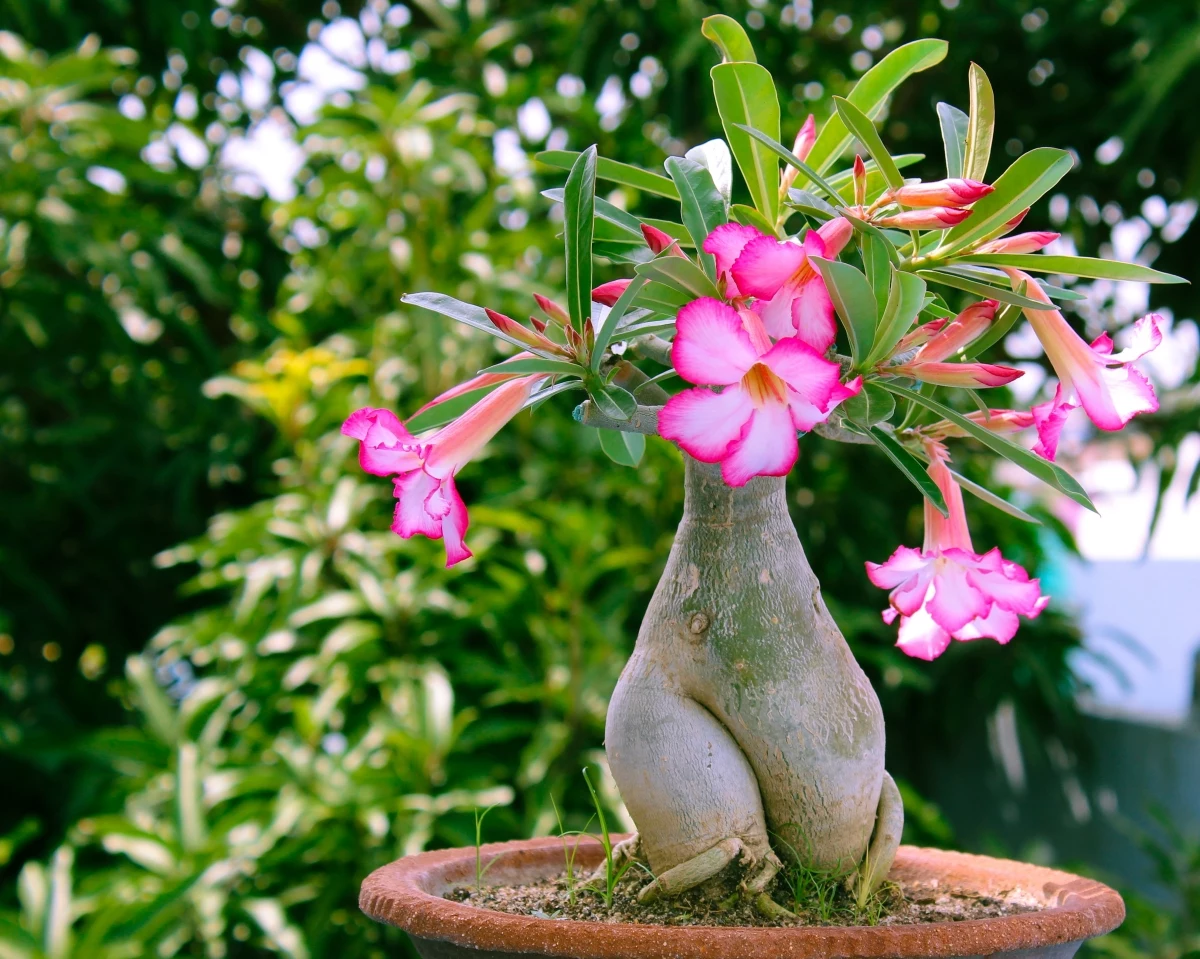
Heads up! If you ever break a leaf or stem, you’ll see a milky white sap. This stuff is the plant’s defense system, and it’s toxic. It can be a major skin irritant and is dangerous if ingested. We’ll get to safety gear later, but it’s good to know from the start. Oh, and a little bit of trivia: this sap was traditionally used by tribes to create poison arrows for hunting. So yeah, handle with care!
The Foundation: Soil and Pot (Don’t Skip This!)
The #1 way people kill a Desert Rose is with root rot from soil that stays wet. Your standard, all-purpose potting mix is a death sentence. It’s made to hold moisture, which is the exact opposite of what you want.
You need a mix that drains like a sieve. After tons of trial and error, my go-to recipe is simple:
- One part Coconut Coir: This is the organic base. I prefer it over peat moss because it’s easier to re-wet if it dries out completely.
- One part Pumice (or Perlite): This creates air pockets so the roots can breathe. Pumice is a bit heavier and won’t float to the top when you water, which is a nice plus.
- One part Coarse Grit: Think horticultural sand or fine gravel. This adds weight and ensures water rushes right through. Never use play sand, which clogs everything up.
Mixing your own soil ingredients will probably cost around $20-$25 for the bags, but you’ll have enough for several years and multiple plants. It’s a great investment.
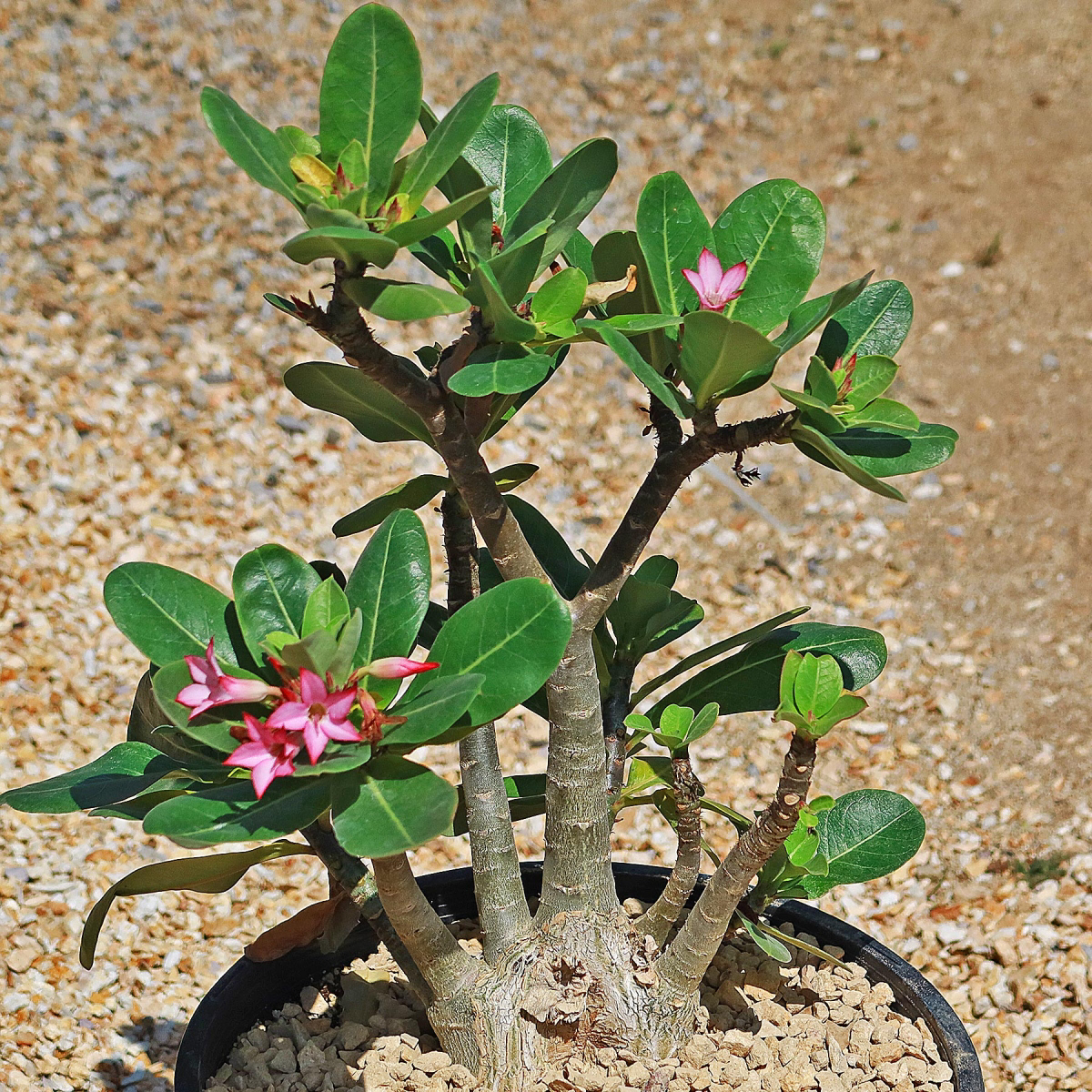
Beginner’s Shortcut: Let’s be real, playing soil scientist isn’t for everyone. If you want a quick and effective alternative, just buy a bag of high-quality cactus/succulent mix and a separate bag of perlite or pumice. Mix them roughly 50/50. It’s a massive upgrade from using the mix straight out of the bag and works great.
Picking the Perfect Pot
The pot is just as crucial as the soil. For beginners, I always recommend an unglazed terracotta pot. The clay is porous, so it breathes and helps the soil dry out faster, giving you a buffer against overwatering. You can find a 6-inch one for about $3-$5 at any home improvement store.
Size is also key. These plants actually like being a little snug in their pots—it encourages blooming. Choose a pot that’s only an inch or two wider than the caudex. A pot that’s too big holds excess soil that stays wet forever, leading straight to rot. And this is non-negotiable: it MUST have drainage holes. If it doesn’t, it’s not a pot, it’s a bowl.
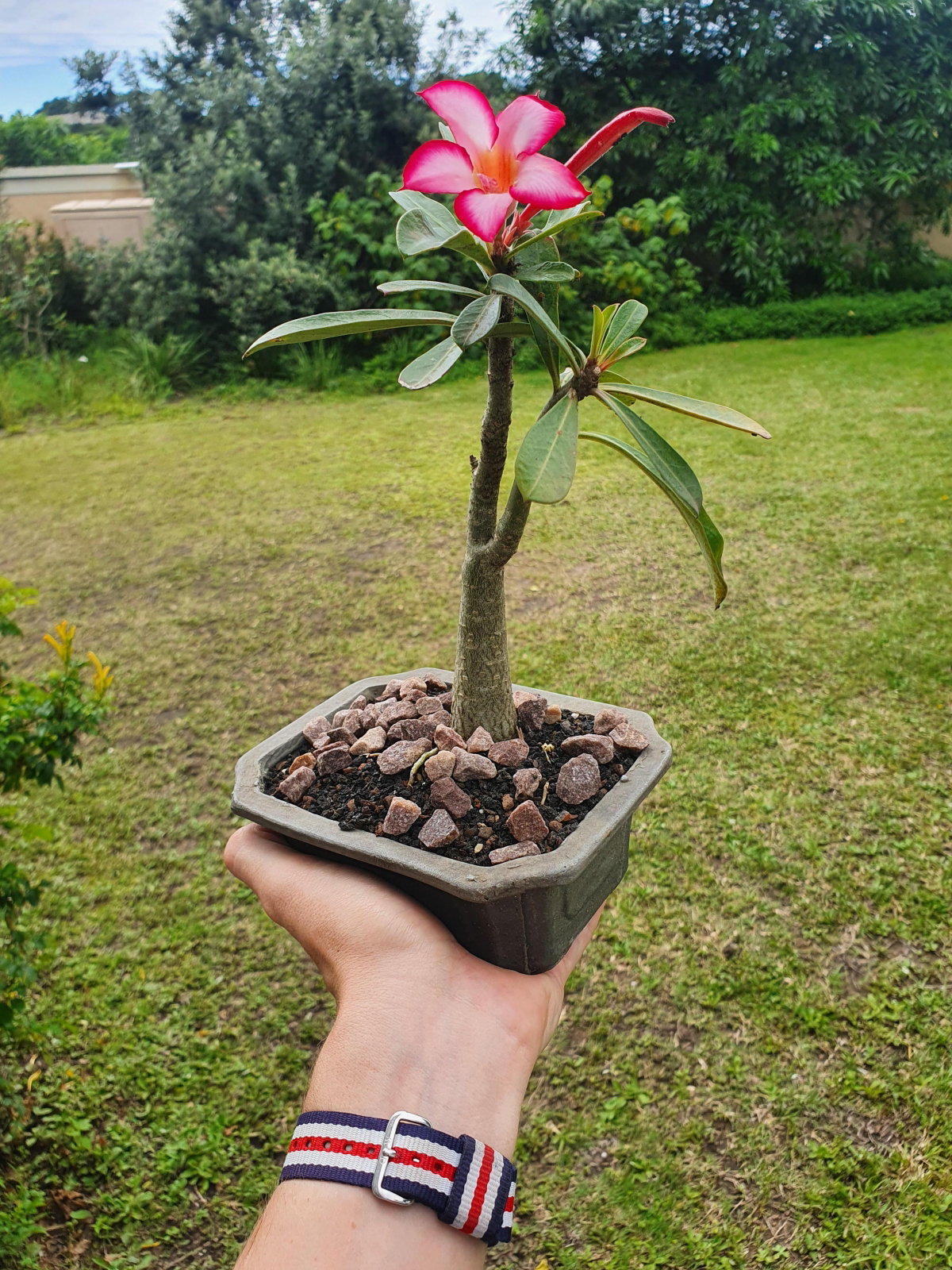
How to Water and Feed (The Right Way)
The best method is called “soak and dry.” When it’s time to water, drench the plant completely until water pours out of the bottom. This ensures every root gets a drink. Then—and this is the important part—let it dry out almost completely before you water again.
How can you tell? Stick your finger a couple of inches into the soil. If you feel any dampness, wait. A better trick is to learn the weight of the pot. A freshly watered pot is heavy; a dry one is surprisingly light. You’ll get a feel for it just by picking it up.
Remember, your plant has seasons. In the summer, it might need water every few days. But in the winter, when it goes dormant (and often loses its leaves), you might only water it once a month, just to keep the caudex from shriveling. Overwatering a dormant plant is the fastest way to kill it.
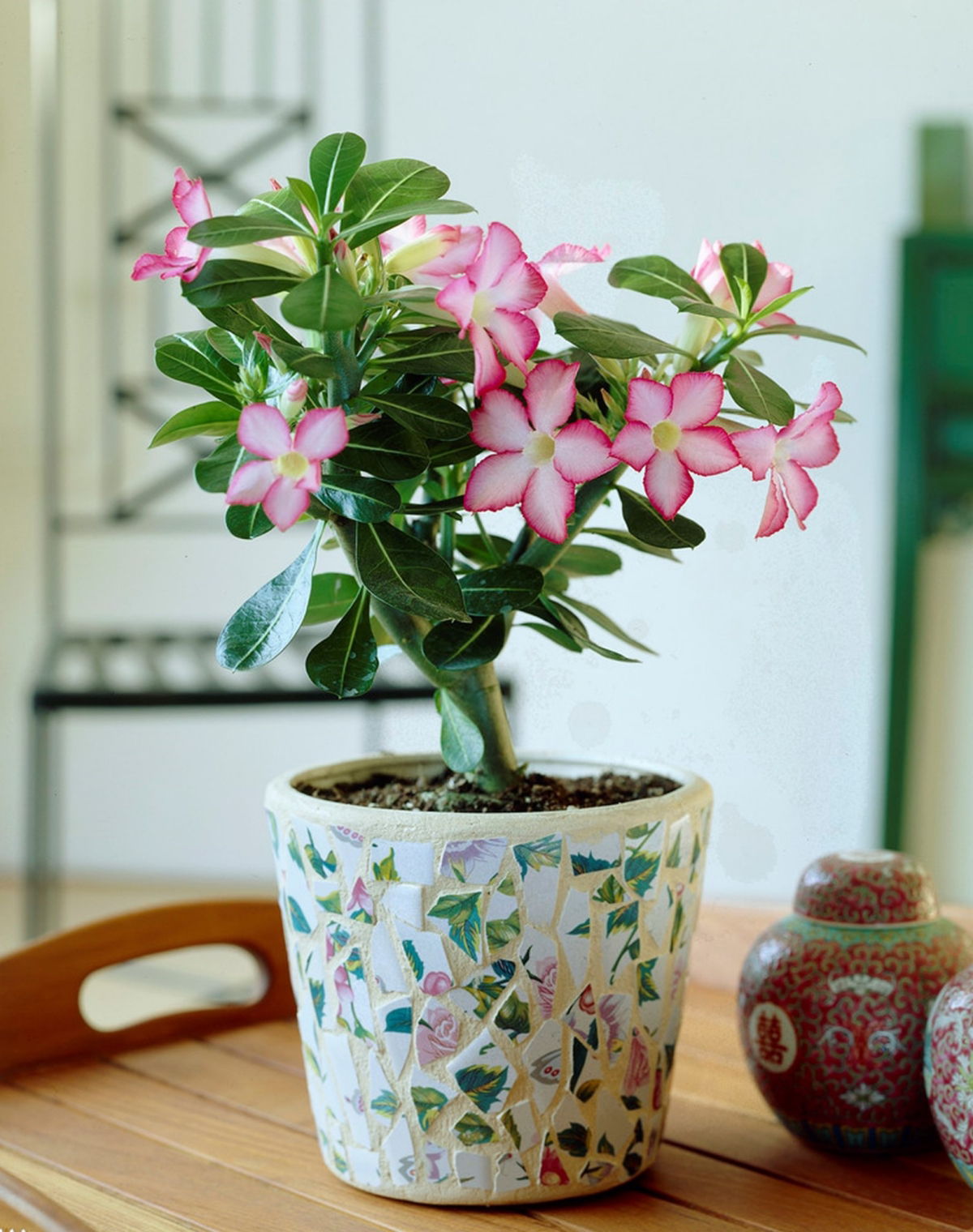
As for food, they’re pretty hungry during the spring and summer. I use a balanced liquid fertilizer (like a 10-10-10) diluted to half-strength with every other watering. A quick tip: NEVER fertilize a plant when the soil is bone dry. Water it normally first, then give it the fertilizer mix. And never feed a dormant plant!
Give It Light, Give It Heat
Desert Roses are total sun-worshippers. They need at least six hours of direct sun every day to stay compact and produce lots of flowers. A south-facing window is perfect. If you put it outside for the summer, it can handle full sun, though in the most intense desert climates, a little afternoon shade can prevent sunburn on the caudex.
A plant that’s not getting enough light will get long, pale, and stretchy. It’s literally reaching for more sun. If you see that, it’s time to move it to a brighter spot.
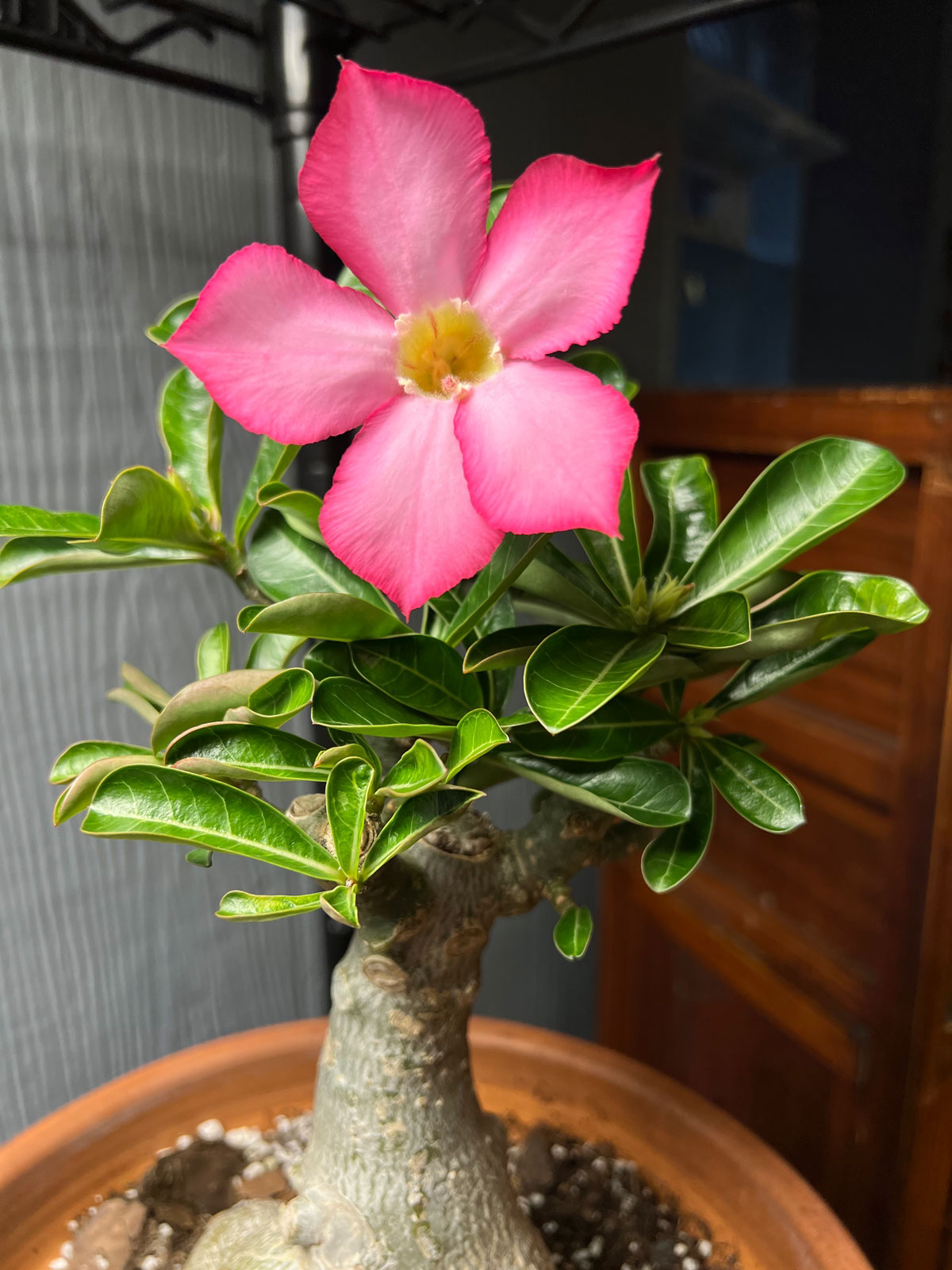
These plants also love heat, thriving in temperatures between 70°F and 100°F. But they are absolutely not frost-tolerant. Once nighttime temps start dipping into the 50s, it’s time to bring them inside for their winter nap. I usually give them a good rinse-down first to knock off any potential pests like spider mites that hitched a ride.
Pruning: Shaping Your Living Sculpture
Pruning is how you turn a gangly plant into a full, beautifully shaped specimen. Don’t be shy! The best time to prune is in early spring as it’s just waking up. Using clean, sharp shears, cut branches back by about a third. Typically, two or more new branches will sprout from just below the cut, creating a much denser canopy.
For an advanced look, you can try “caudex lifting.” Every few years when you repot, you can set the plant just a little bit higher than it was before, exposing more of that amazing caudex and upper roots. Over time, this creates that classic, ancient bonsai look.
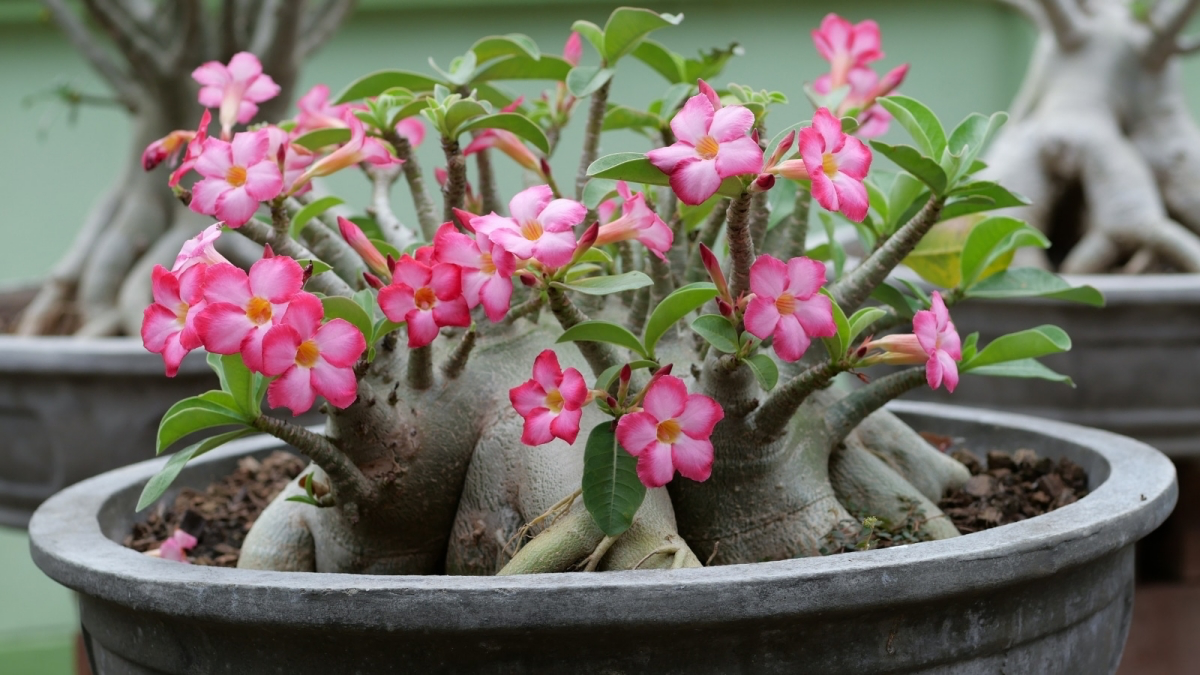
Help! What’s Wrong With My Plant?
Even with good care, stuff happens. Here’s a quick rundown:
- Mushy Base (Caudex Rot): This is the big one. It’s from overwatering. A healthy caudex should feel firm, like a raw potato. If it feels soft in spots, like a bruised apple, you’re in trouble. Prevention is truly the best medicine here.
- Spider Mites: Tiny pests that leave fine webbing. They hate moisture, so a strong blast of water can help. If they persist, insecticidal soap is your friend.
- Mealybugs: Little white cottony dots hiding in crevices. For a small infestation, a cotton swab dipped in rubbing alcohol will kill them on contact.
- Yellowing Leaves: This is detective work. If the soil is wet, it’s overwatering. If the soil is bone dry and the caudex is a bit wrinkly, it’s underwatering. If it’s fall, it’s probably just going dormant. Context is everything.
Making More: Seeds vs. Cuttings
So you’re hooked and want more? You have two main options, and they produce very different plants.
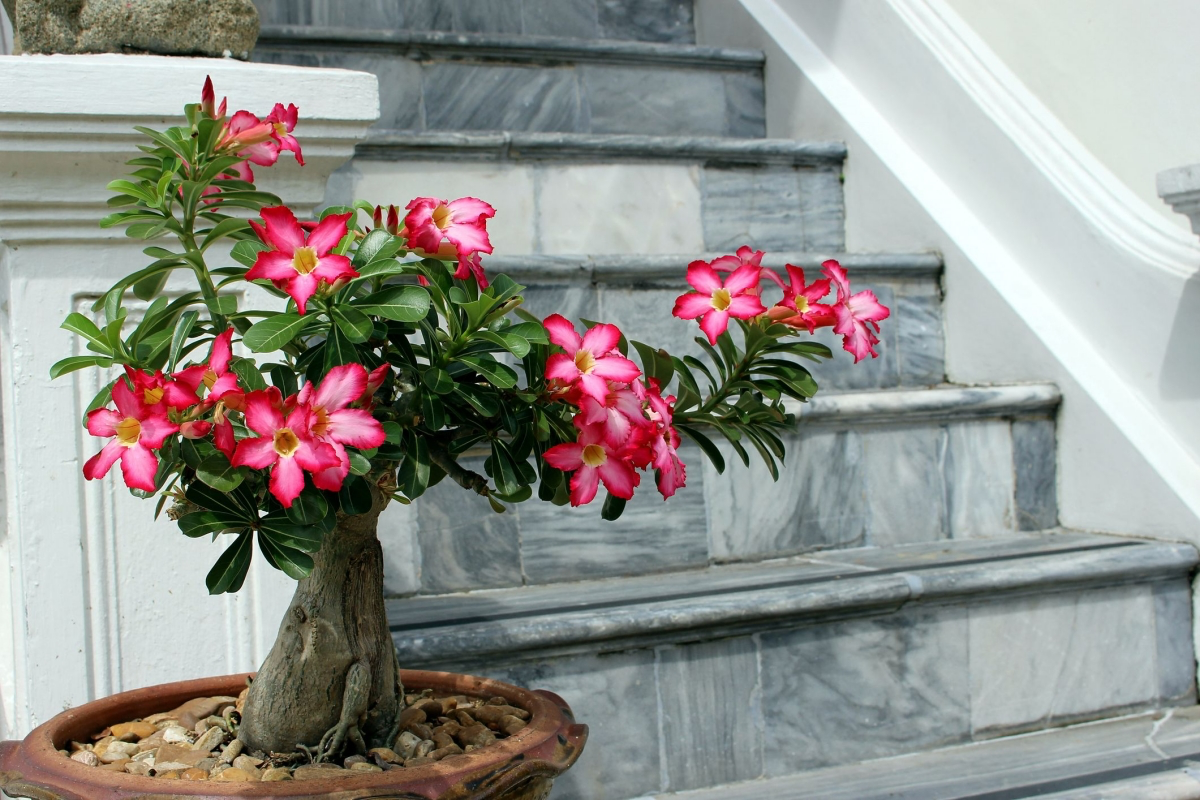
Growing from Seed is the only way to get that classic, fat, bottle-shaped caudex. You can buy seeds from online sellers on platforms like Etsy, but make sure they’re fresh for the best results. Every seed will grow into a totally unique plant, so the flower color and shape will be a surprise! The downside? It’s a slow process. You’re looking at 2-3 years, or even more, before you see your first flower.
Growing from Cuttings is the fast track. You can take a 6-inch piece from a branch, let it dry for a few days, and then plant it. It will root in a few weeks and can flower in less than a year. The huge benefit here is that it’s an exact clone, so you know exactly what kind of flower you’ll get. The trade-off is that it will never form a true, swollen caudex. It will develop thickened roots, but it won’t have that signature bottle shape.
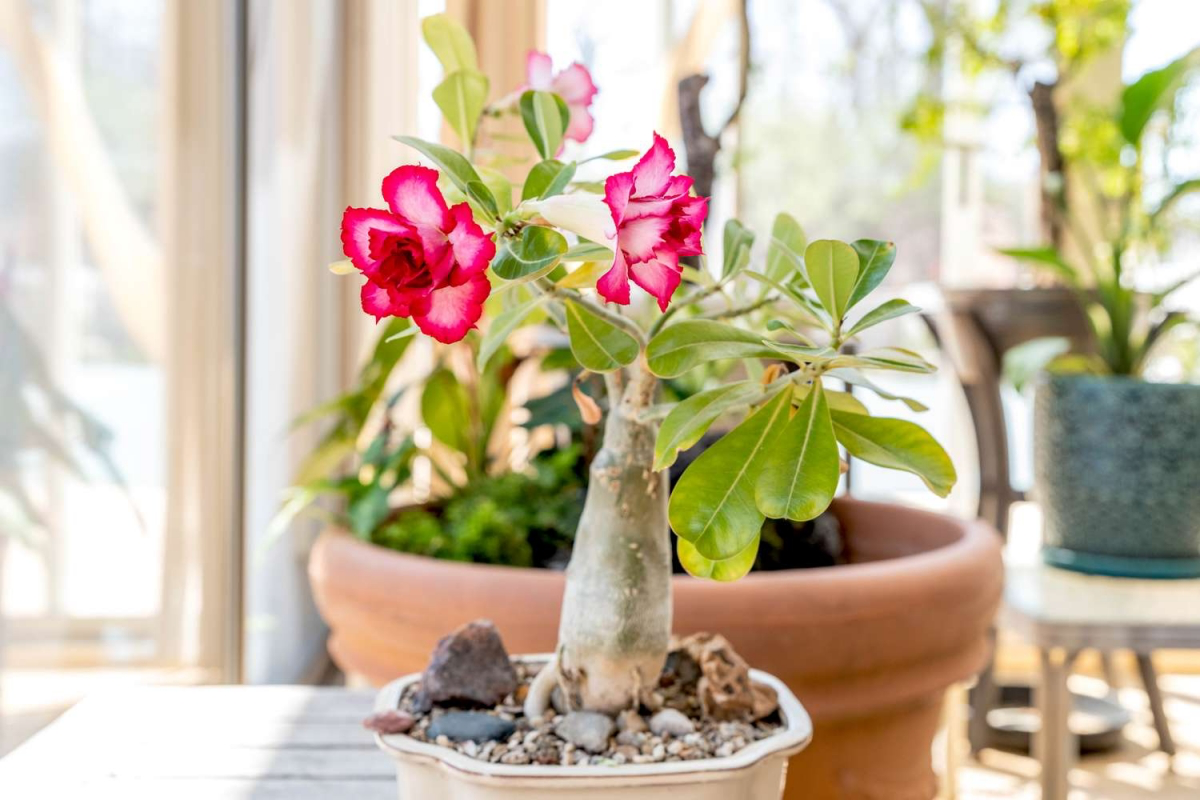
A World of Variety
The basic Adenium obesum is what you’ll find most often, usually at a big-box store for $15-$30 for a starter plant. But a whole world of incredible hybrids exists, thanks to passionate breeders overseas. They’ve created double and triple-petal flowers, striped ones, picotee edges, and even nearly black varieties. These are usually sold as grafted plants—a fancy top fused onto a sturdy, established rootstock. You’ll find these at specialty nurseries or online, and they command a higher price, but they are absolutely breathtaking.
Final Reminder: Safety First
I can’t say it enough: the sap is toxic. My hard-and-fast rule is to always wear disposable gloves when pruning or repotting. I learned this the hard way after getting a nasty, itchy rash on my arm from a quick trim. It’s a simple step that saves a lot of trouble. Always wash your hands and tools well afterward, and please, keep these plants away from curious pets and small children.
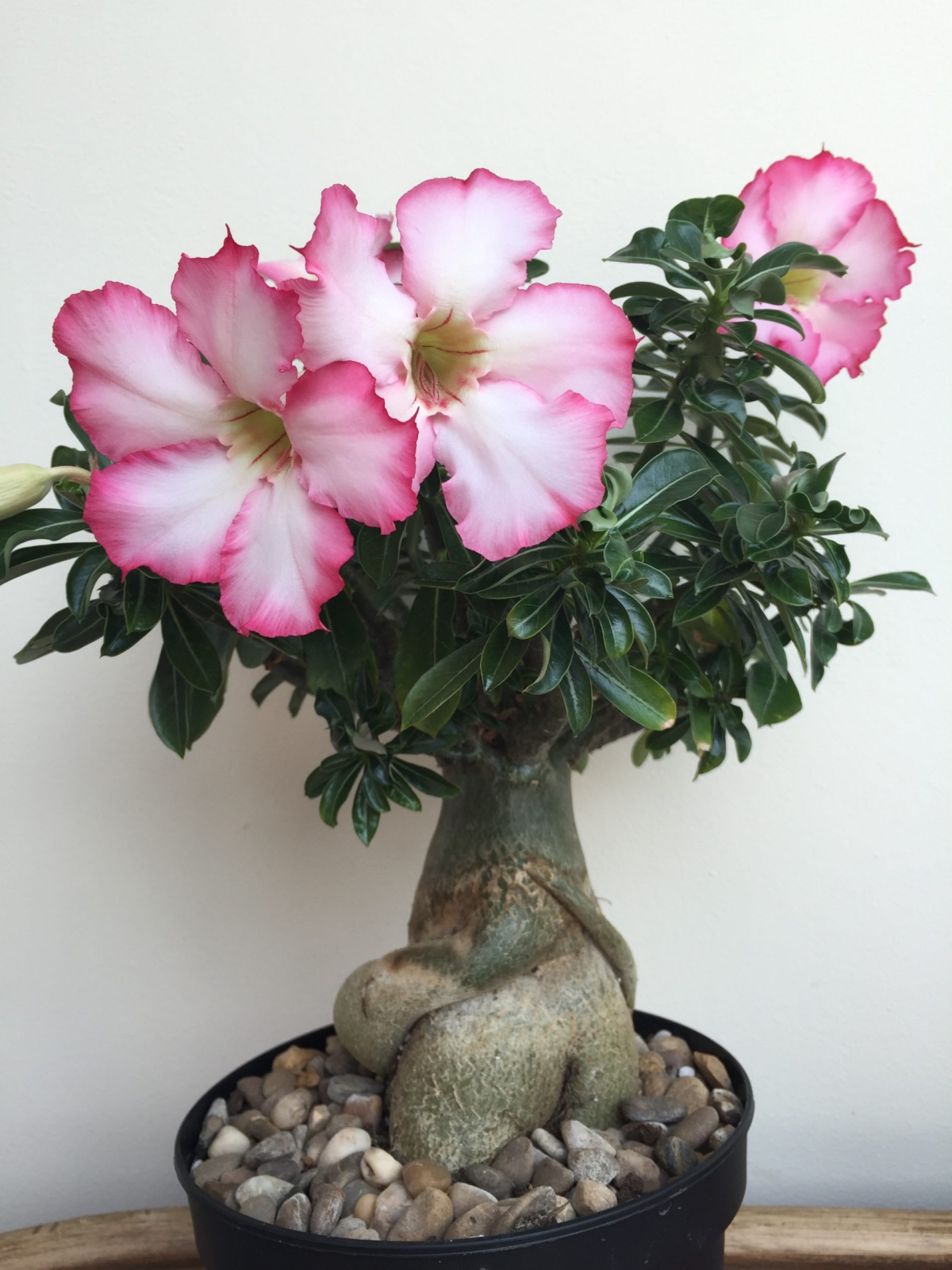
Growing a Desert Rose is a journey in patience. But when you get it right, you’re rewarded with a unique, powerful-looking plant that will give you years of enjoyment. Don’t be afraid to experiment; it’s the best way to become a great grower.
Galerie d’inspiration
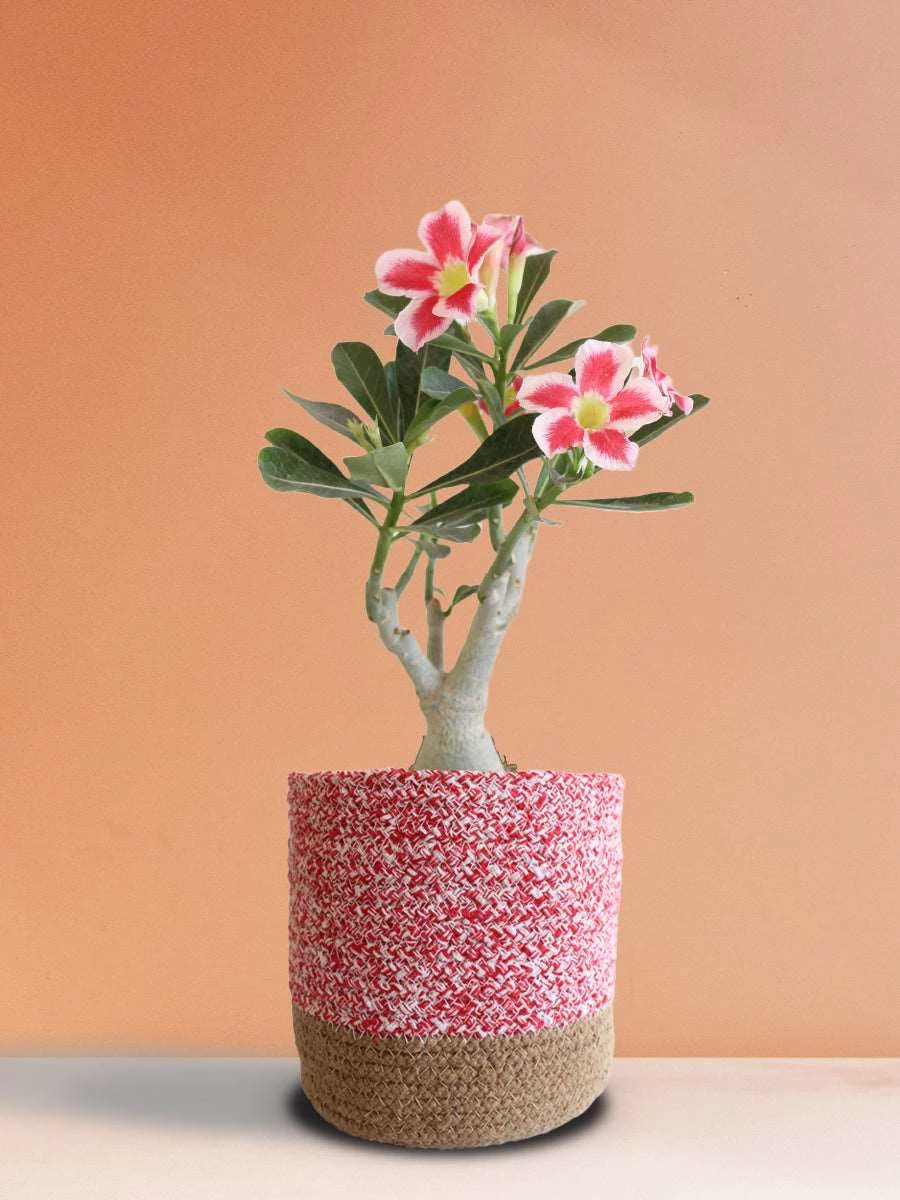
Is my Desert Rose just supposed to be a thick trunk with a few leaves?
Not at all! To encourage that spectacular burst of flowers, strategic feeding is key. But forget all-purpose plant food. Desert Roses crave a fertilizer lower in nitrogen (which promotes leaves) and higher in phosphorus (which fuels blooms). Look for a formula like Schultz Cactus Plus 2-7-7 Liquid Plant Food. During the active growing season (spring and summer), feed a diluted solution every two to three weeks. Taper off completely as fall approaches to let the plant prepare for its natural winter dormancy.










